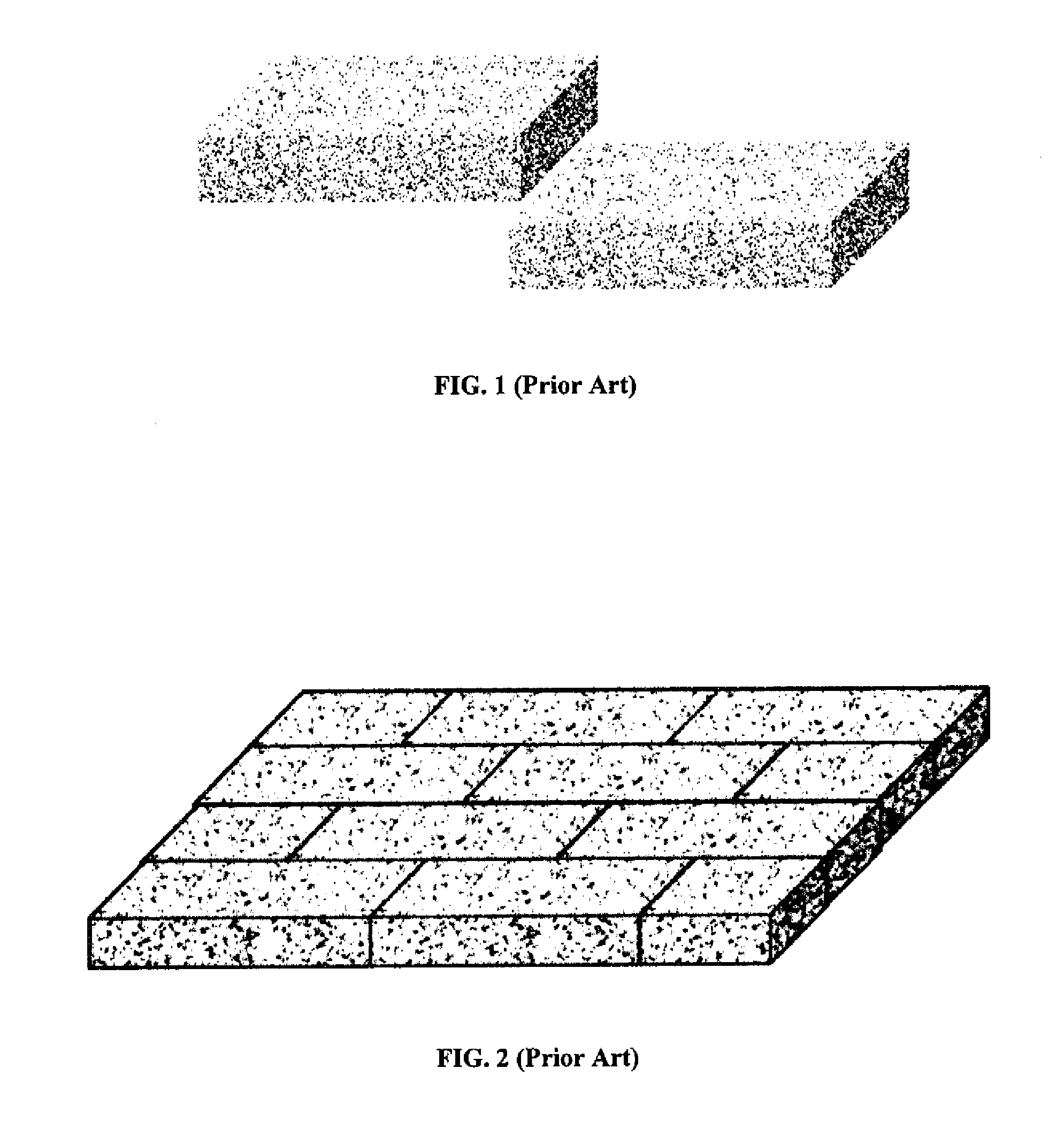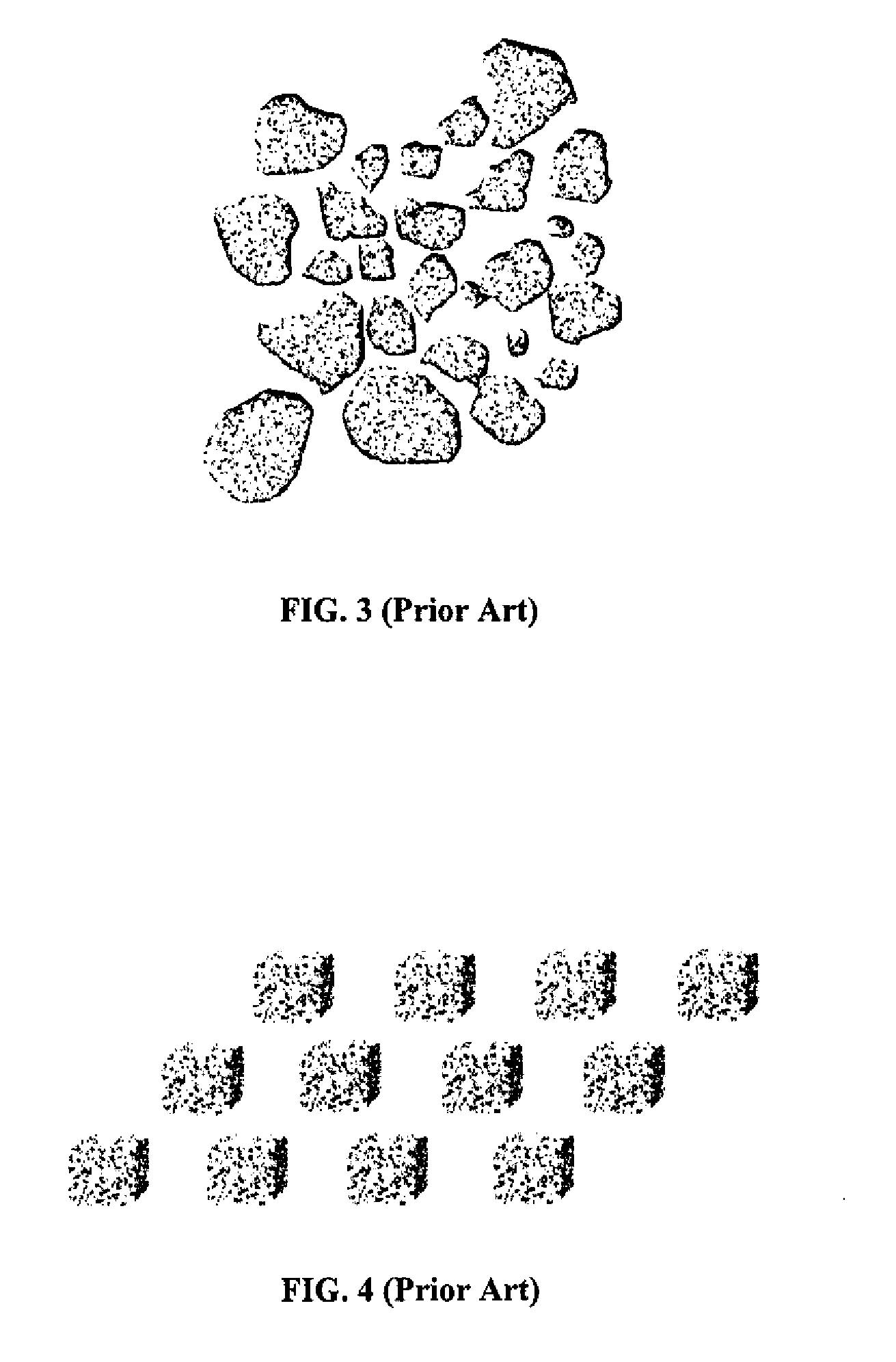Oil Fire and Boil Over Attenuation Using Buoyant Glass Materials
a technology of buoyant glass and oil fire, which is applied in fire rescue, medical science, dental surgery, etc., can solve the problems of catastrophic spreading of burning oil near the storage vessel, dangerous and often disastrous oil fires, and boil over, so as to reduce thermal radiation and attenuate the boil over phenomenon.
- Summary
- Abstract
- Description
- Claims
- Application Information
AI Technical Summary
Benefits of technology
Problems solved by technology
Method used
Image
Examples
Embodiment Construction
[0034]It is to be understood that the figures and descriptions of the present invention have been simplified to illustrate elements that are relevant for a clear understanding of the invention. The detailed description will be provided hereinbelow with reference to the attached drawings.
[0035]Cellular glass is a material composed primarily of glass that contains a significant number of completed closed bubbles in the material to form a lower density material than a solid glass product. Cellular glass may generally range in density from three pounds per cubic foot up to the density of the oil product in which it will ultimately need to float (which will vary). The greater the difference between the density of cellular glass and that of the oil, the more buoyant the cellular glass system will be, and the greater the protection the system will provide.
[0036]Cellular glass will be closed celled, so that oil absorption will not result in premature system failure due to the cellular glass...
PUM
 Login to View More
Login to View More Abstract
Description
Claims
Application Information
 Login to View More
Login to View More - R&D
- Intellectual Property
- Life Sciences
- Materials
- Tech Scout
- Unparalleled Data Quality
- Higher Quality Content
- 60% Fewer Hallucinations
Browse by: Latest US Patents, China's latest patents, Technical Efficacy Thesaurus, Application Domain, Technology Topic, Popular Technical Reports.
© 2025 PatSnap. All rights reserved.Legal|Privacy policy|Modern Slavery Act Transparency Statement|Sitemap|About US| Contact US: help@patsnap.com



